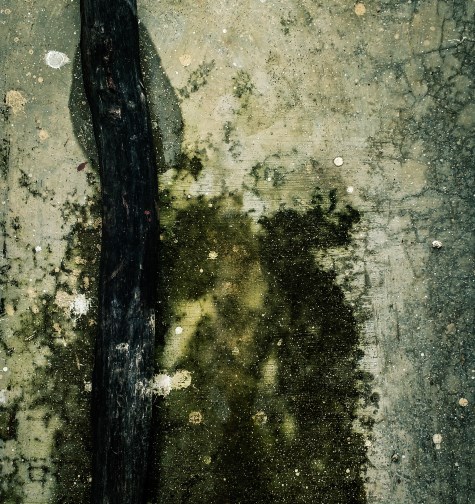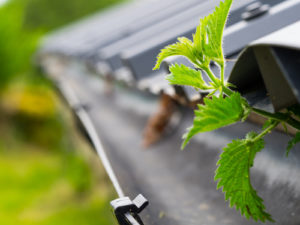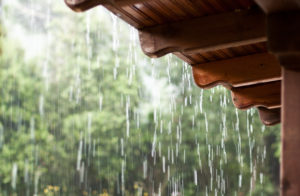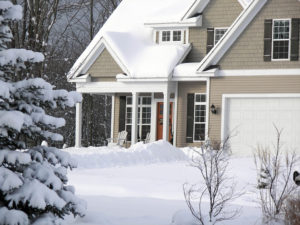Today, we’re going to look at the potential damage faulty gutters can cause for a portion of your home. But surprisingly and unknown to many, it’s not on the exterior.
There are at least three ways, if not more, you can incur water damage in your basement. One is a faulty sump pump or other drainage equipment. Two is a leaky pipe. Three is, believe it or not, clogged or poorly protected gutters causing foundation cracks or leaks.
Water From Above
Not all water damage starts at or below ground level. Much of it comes from higher elevations. Either it’s in the form of direct precipitation or from the gutter system. Sometimes, the latter can cause more significant issues than natural weather patterns.
When channels aren’t fully enclosed like those of the K-Guard Leaf Free Gutter System, they gather leaves, pollen, seeds, acorns, and any other debris which directly fall into it. This does two things.
First, it causes a potential clog at the drainage hole for the downspout. Second, it adds an unnecessary layer to the rain channel. Therefore, the amount of space for precipitation to accumulate decreases. It’s a scenario rife with potential problems.
The Water has to go Somewhere
If windy, water may splash up against the roof shingles and cause damage to the roof fascia board and soffit. However, most of it is going to flow down the foundation. Actually, flow may not be the appropriate term. Gush is probably a better description.
It will breach the area around the downspout and break through the gutter’s seams in multiple locations. When it does, it’s going to pour down the foundation. Or, it will puddle on a drive or walkway with enough of an incline to spread toward it. In either situation, it will cause damage.
Unwelcome Entrance to the Basement
As the foundation softens it can crack. This is one way water from damaged gutters makes its way into the basement and down its walls. Another way is via ground-level windows or storm doors without proper seals.
The basement isn’t out of danger after the rainy storm season. For example, come winter in Kansas City and other locations across the U.S., rain will become snow. Once it melts, the same situation will take place if the gutters aren’t repaired.
The Potential Damages
Mold is a huge problem to watch for when damaged gutters cause water seepage. Unventilated areas combined with moisture result in this spore that can rapidly spread if not addressed. If the seepage takes place in different sections, then mold can appear in multiple locations.
Another is rotted wood and drywall. While water has the potential of evaporating on the wood, it will seep into the drywall to cause softness and staining.
These are two examples of physical damage. The other comes in the form of money. Not only will the gutters need to be repaired or replaced so this doesn’t happen again but also the foundation, drywall, and even the supports. This is especially true if the mold is strong enough it can’t be cleaned.
How to Avoid These Potential Issues
- Fix your gutters now, not later. A new cover or some extra supports won’t help. If it constantly leaks and clogs, then another solution is needed.
- Repair cracks in the foundation. If you can see a hole in the concrete, then it needs to be closed before the next storm. Make sure you leave enough time for it to properly cure for a solid shield.
- Reseal your basement windows and doors. Make sure the weather stripping and window sealant are replaced. Look for products that are waterproof or at least water-resistant.
- Purchase a K-Guard leaf free gutter system. Our gutters are completely enclosed to prevent anything except water from entering. In addition, the larger channels and downspout fittings permit a quicker discharge of liquid without the risk of clogging or seepage.
Avoid these potential issues with your gutter system and basement. Contact us today for a free estimate.




